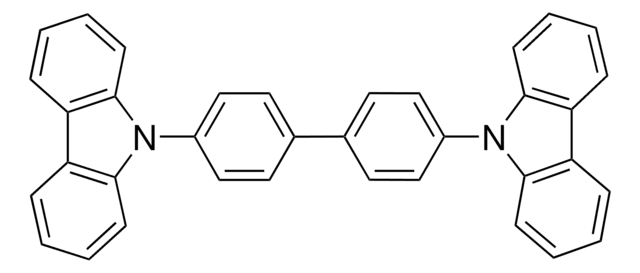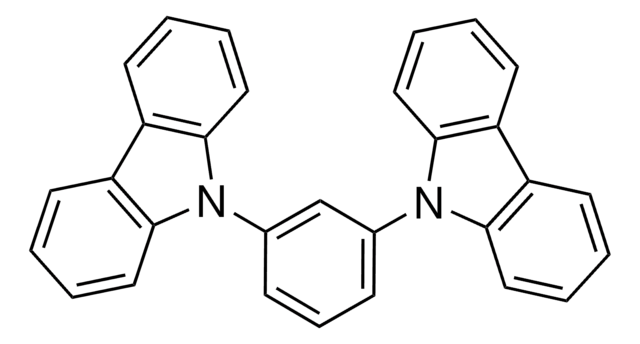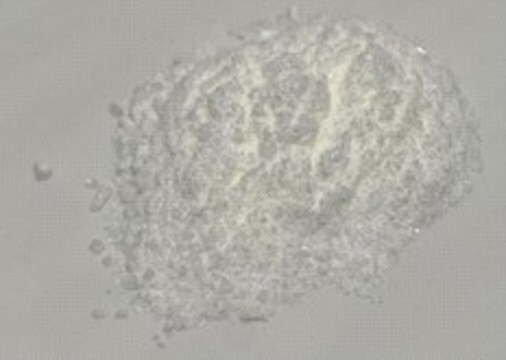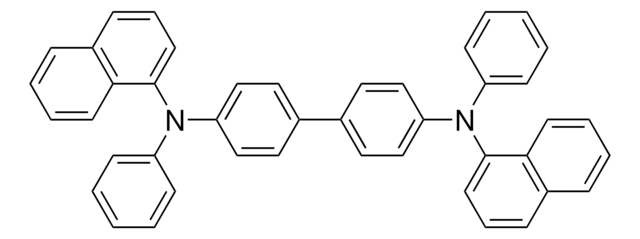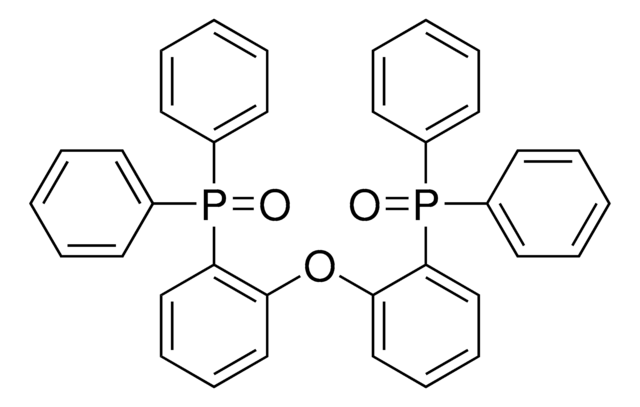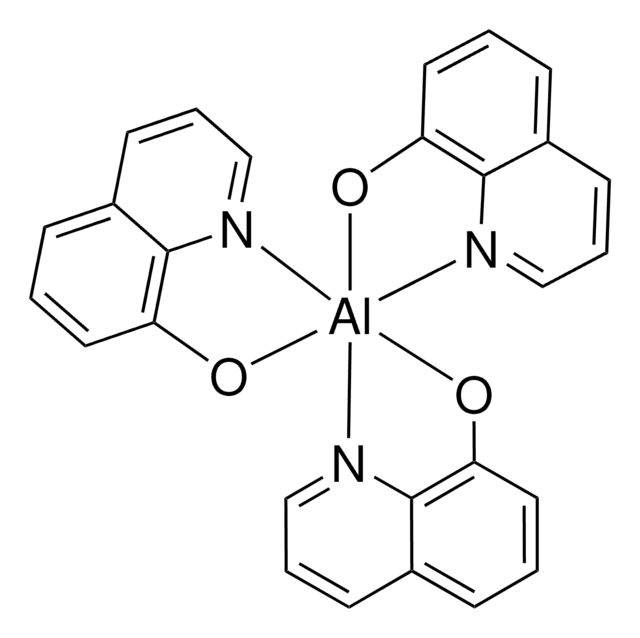Wichtige Dokumente
806781
TPBi
Synonym(e):
2,2′,2"-(1,3,5-Benzinetriyl)-tris(1-phenyl-1-H-benzimidazole)
About This Item
Empfohlene Produkte
Assay
≥99.5% (HPLC)
Qualitätsniveau
Form
powder
mp (Schmelzpunkt)
272-277 °C
Energie der Orbitale
HOMO 6.2 eV
LUMO 2.7 eV
Leistung von OLED-Bauelementen
ITO/MoO3/NPB/Cz-BTPE/TPBi/LiF/Al (ref 2)
ITO/MoO3/NPB/Ph-BTPE/TPBi/LiF/Al
ITO/MoO3/NPB/isopro-BTPE/TPBi/LiF/Al(ref 2)
ITO/MoO3/NPB/methyl-BTPE/TPBi/LiF/Al (ref 2)
SMILES String
C1(C2=NC(C=CC=C3)=C3N2C4=CC=CC=C4)=CC(C5=NC(C=CC=C6)=C6N5C7=CC=CC=C7)=CC(C8=NC(C=CC=C9)=C9N8C%10=CC=CC=C%10)=C1
InChI
1S/C45H30N6/c1-4-16-34(17-5-1)49-40-25-13-10-22-37(40)46-43(49)31-28-32(44-47-38-23-11-14-26-41(38)50(44)35-18-6-2-7-19-35)30-33(29-31)45-48-39-24-12-15-27-42(39)51(45)36-20-8-3-9-21-36/h1-30H
InChIKey
GEQBRULPNIVQPP-UHFFFAOYSA-N
Suchen Sie nach ähnlichen Produkten? Aufrufen Leitfaden zum Produktvergleich
Allgemeine Beschreibung
The increase in power conversion efficiency of the device on the addition of TBPi is attributed to the following reasons:
- Preventing exciton from quenching at the acceptor/cathode interface.
- Acting as an optical spacer.
- Forming a passivating layer.
Anwendung
Lagerklassenschlüssel
11 - Combustible Solids
WGK
WGK 3
Flammpunkt (°F)
Not applicable
Flammpunkt (°C)
Not applicable
Hier finden Sie alle aktuellen Versionen:
Besitzen Sie dieses Produkt bereits?
In der Dokumentenbibliothek finden Sie die Dokumentation zu den Produkten, die Sie kürzlich erworben haben.
Kunden haben sich ebenfalls angesehen
Artikel
Organic Light-emitting Diodes (OLEDs) are solid-state devices that transform electrical energy into light. OLEDs are considered the next generation technology for high-resolution flexible displays and solid state lighting, attracting intense scientific and industrial interest.
Advances in the area of soft optoelectronics, with a focus on the development of organic optoelectronic devices on shape memory polymers (SMP) is discussed.
Verwandter Inhalt
Organic electronics utilizes organic conductors and semiconductors for applications in organic photovoltaics, organic light-emitting diodes, and organic field-effect transistors.
Unser Team von Wissenschaftlern verfügt über Erfahrung in allen Forschungsbereichen einschließlich Life Science, Materialwissenschaften, chemischer Synthese, Chromatographie, Analytik und vielen mehr..
Setzen Sie sich mit dem technischen Dienst in Verbindung.

